Bumble bees are back. The first to appear are the only ones to have survived the winter: the queens. They have the monumental task of feeding, establishing a nest, laying eggs and raising the first generation of workers.
The first bumble bee spotted a couple of days ago was a Bombus bifarius feeding on the nectar of Pieris japonica. 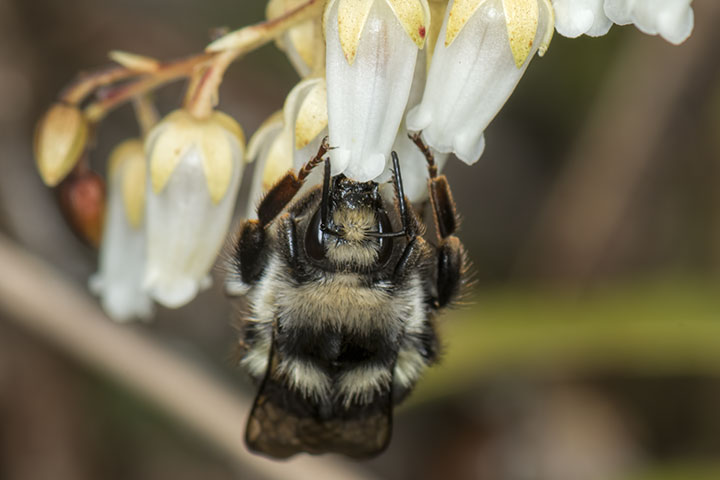
The second to be spotted was a Bombus centralis.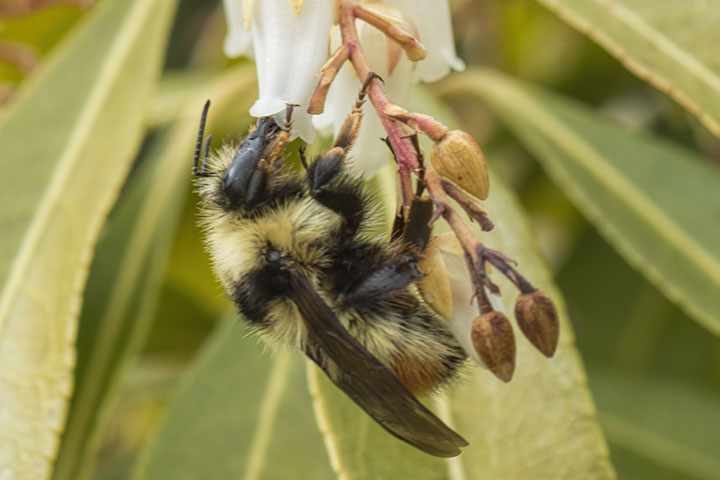
Now, something really interesting appeared, a hover fly (Criorhina sp.), a bumble bee mimic. Compare this fly with the centralis above, and the bifarius below. Now, imagine that you are one of the many birds that favour dining on flies. Will you sample a defenceless tasty treat that looks as if it might actually be a rather lethal queen bee?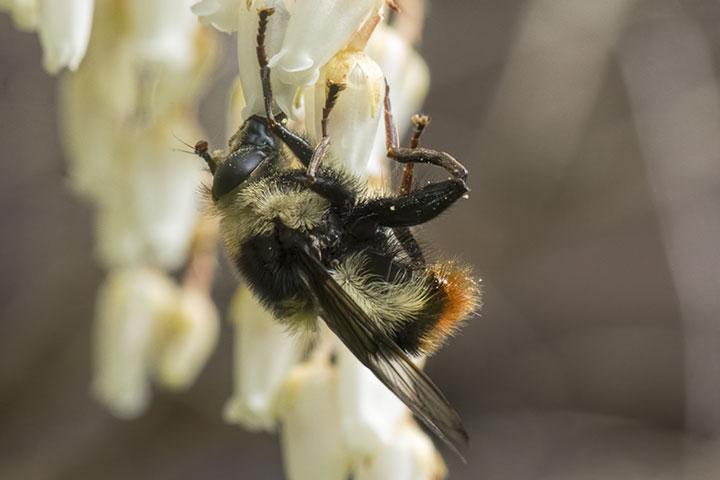
This is a matching side view of the bifarius. My guess is that birds are not going to bother the hover fly.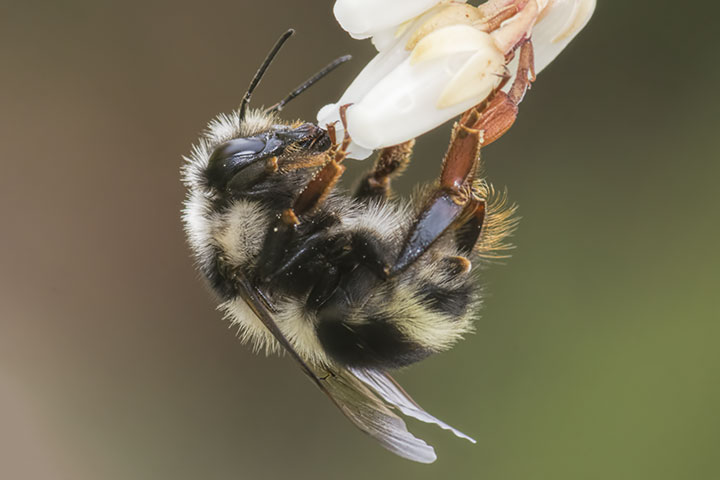
It is a jungle out there, and the centralis calmly flies off to feed on a new flower.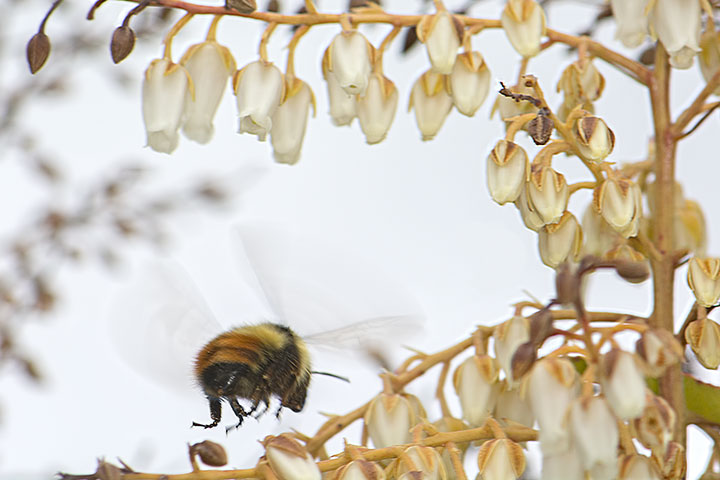

Another great photo sequence and commentary, Alistair. Thank you. I’m awaiting my first sighting of a queen up here. The sandhill cranes are flying over the valley now, and the willows are starting to bloom, so emergence of bumble bee royalty is soon to follow.
We were both thrilled to read your comments. Very Interesting. Thankyou
Alistair, I try to keep up with your postings not only for the incredible images you create but also for the information that you share. I have been paying more attention this year to bumblebees and trying (hahah) to identify some. And now you have shown me the bumble mimic to confuse me even more! Thanks as always, marlene